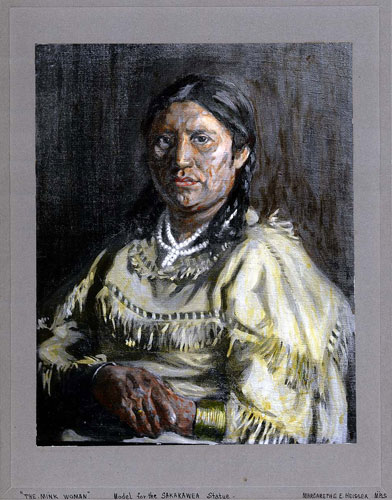The Challenge of Sakakawea
By Clay Jenkinson
From A Vast and Open Plain: The Writings of the Lewis and Clark Expedition in North Dakota, 1804-1806
Copyright © 2003 by the State Historical Society of North Dakota
The woman known as Sakakawea was probably born among the Shoshone Indians around 1787, the year the United States Constitution was crafted in Philadelphia. Her childhood homeland was apparently in the Three Forks-Shoshone Cove region of what is now southwestern Montana.
Lewis and Clark understood that she had been captured about the age of eleven from the Three Forks. Her captors were Hidatsa raiders from the Knife River earthlodge villages in what is now North Dakota. She spent the next five or six years among the Hidatsas, and by the time Lewis and Clark arrived in late October 1804 she was one of the wives of a resident French-Canadian trader named Toussaint Charbonneau.
Thus the famous Sakakawea was probably genetically Shoshone and culturally a blend of Shoshone and Hidatsa when Lewis and Clark met her on November 11, 1804. In recent years her Hidatsa (Minitari) cultural identity has been emphasized. It is likely that she was formally adopted into the Hidatsa world sometime after her capture in Montana.




